Dendrobium phalaenopsis orchid: description, reproduction and care
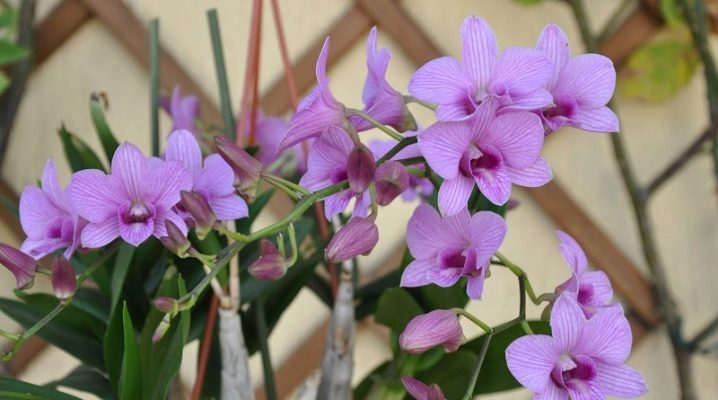
From a large family of orchids, the Dendrobium Phalaenopsis hybrid has all the best properties of two different species: Dendrobium and Phalaenopsis. This orchid has attractive flowers and a pleasant light scent.
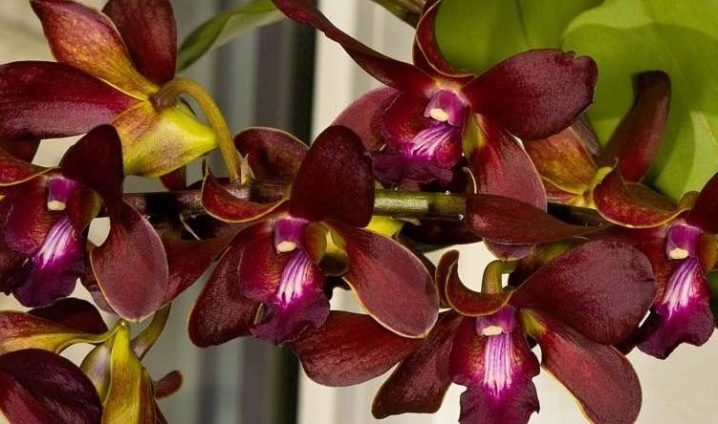
Features and characteristics
In nature, this species can be found in northern Australia and Papua New Guinea, where it grows on trees and rocks. Due to the high air temperatures and humidity, as well as the huge habitat, the shape and appearance of the plant changes.
The indoor variety of dendrofalenopsis can reach 120 cm in height. This orchid has a sympodial growth form: spindle-shaped pseudobulbs grow from the rhizome, which store the necessary nutrients and water. Peduncles form on their upper part, after which the pseudobulbs stop growing, and new growth sites are formed at their base. Peduncles can have up to 40 flowers, formed from eight petals, their diameter can be from 3 to 7 cm. The flowering is abundant, lasts several months, the color range varies from snow-white to pink, purple and deep purple.
On the stem are from 2 to 15 dense elongated leaves with a notch in the middle. At the bottom they are smaller, quickly fall off, and at the top they are larger and can grow for 2-3 years. The color of the leaf plates is dark green.
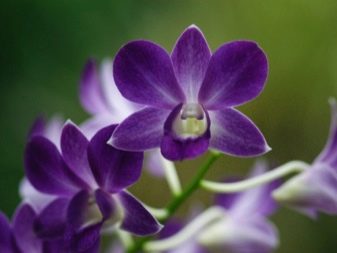
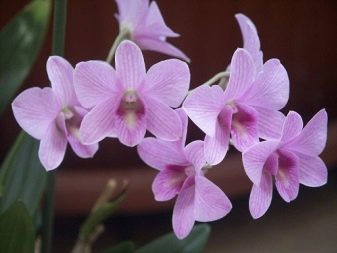
Home care
In general, this type of orchid is not very moody and does not need any special attention, but it is still worth following some rules when caring for it. To extend the flowering period and good growth, the plant needs to create:
- necessary lighting;
- comfortable temperature;
- regular hydration.
The key factor that influences the correct development, and first of all, the flowering, is light. The more it is, the better Dendrobium Phalaenopsis will bloom, the best option is full daylight hours, 12 hours.
Therefore, the flower should be placed on the windows of the sunny side of the house, but shaded from direct sunlight so as not to cause burns on the leaves. The best option is diffused light.
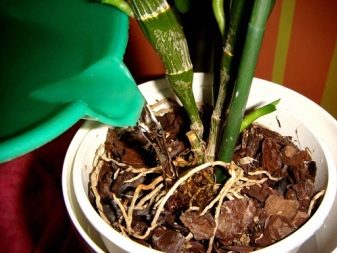
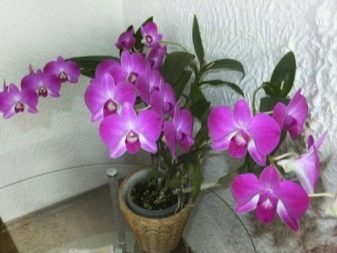
In winter, artificial lighting should be used. Due to a lack of light, the growth of the plant stops, for the same reason, the flowering period may not come. The orchid easily adapts to different temperatures, but the most favorable temperature regime for it is within + 16-30 degrees. This species is thermophilic, so the air temperature below 12 degrees is badly reflected on the flower and can cause its death.
Also, sharp changes between temperature conditions day and night are not very good, so the maximum threshold is 5 degrees.
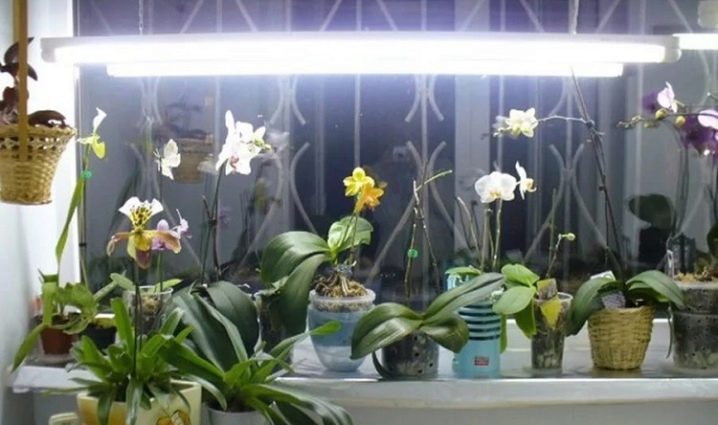
Plant moisture is directly related to the room temperature and the amount of light. With increased rates, frequent watering is needed, and in cool periods, its amount should be reduced. If the substrate is dry, this is a signal that the flower needs to be moistened. You need to water around the edges of the pot or put the orchid in a bowl of water for half an hour. Water for irrigation must be taken boiled or settled, at room temperature.
Dendrobium can be rinsed under the shower, but it should not be hot. In extreme heat, the flower is sprayed or a container of water is placed near it.You can only irrigate the outer side of the leaf plates, since there are oysters on the inner side, which regulate gas exchange.
When the leaf gets wet, gas exchange is disturbed, which adversely affects the condition of the flower.
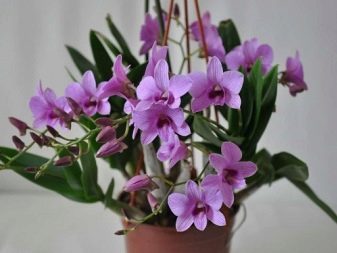
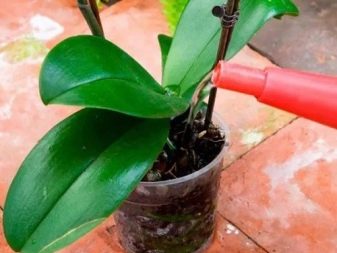
Top dressing and transplanting
Fertilizer should be applied regularly during intensive growth. A special feeding for orchids is recommended, it provides the appropriate proportions of minerals for the normal development of Dendrophalenopsis. You can also use fertilizer for flowering plants, but in this case you need to take half the dose.
In the spring, when shoots begin to appear, feed should be done once or twice a week. After the pseudobulbs have formed, fertilizer is applied with a large amount of potassium and phosphorus. These minerals contribute to the formation of buds, their numbers and the intensity of flowering.
You must not overdo it with fertilizers, otherwise the orchid will dry out.

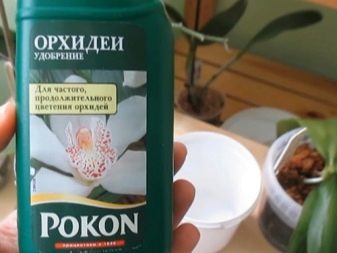
Orchid does not like transplants very much. It is transplanted in several cases:
- if there is damage;
- unstable capacity;
- small pot;
- every 2-3 years.
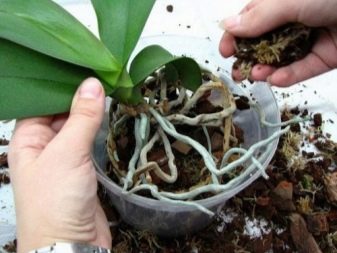
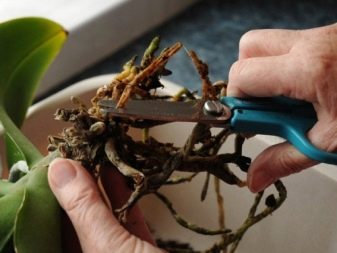
You should not do this more often, since the plant gets stressed. The optimal period for the procedure is February or March. To transplant an orchid you will need:
- a new substrate, you can buy it in the store (choose for orchids) or make it yourself from sphagnum moss, peat bog, chopped bark and coal;
- a light flowerpot of small size with drainage holes (the diameter is 2 cm larger than the previous one);
- pebbles, expanded clay or crushed stone, which cover the bottom of the pot - they are needed for greater stability of the flowerpot;
- carefully remove the orchid from the old container, moisten it before that, free the roots from the old soil, remove the damaged ones;
- gently spread the roots, put the plant in a new flowerpot and sprinkle with earth.
After that, the orchid is placed in a bright place, preferably with high humidity. It does not need to be moistened for 24 hours.


Reproduction
There are two ways to reproduce Denrobium:
- division;
- grafting.
The first method is that a shoot with already formed roots is cut off from the bush with a disinfected tool, it should have 2-3 pseudobulbs. The planted plants are moistened and monitored so that the air temperature in the room is around + 20-22 degrees, there should also be no drafts and direct sunlight. If a new leaf or a young root has appeared, it means that the orchid has begun and started growing.
After a year, Dendrobium can be transplanted into a new pot and a support can be placed.
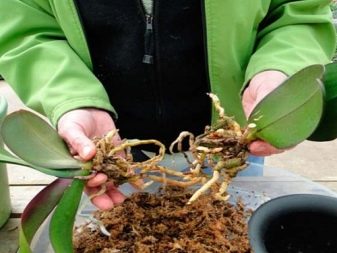
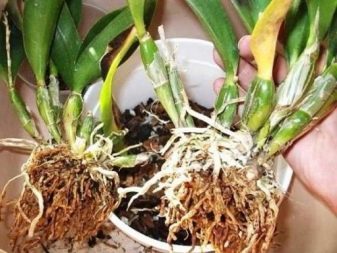
When cutting from a cut off pseudobulb, which did not have flowers and side shoots, cuttings are cut. Each should have 2-3 buds. Sections are sprinkled with crushed charcoal and dried. Then they are placed in a container or plastic bag with moistened moss until roots appear. These greenhouses are regularly ventilated and the moss is lightly watered.
When the roots appear, the sprouts are planted in flowerpots. For two weeks, young plants do not need watering, it is only necessary to spray around with water from a spray bottle. The air temperature should be maintained at +25 degrees.
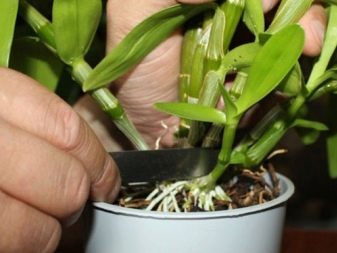
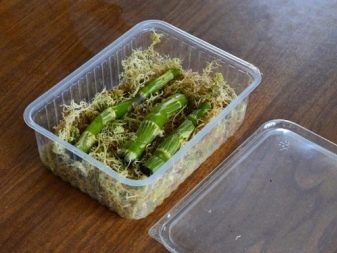
Possible problems
The peculiarity of Dendrobium phalaenopsis is that it is not prone to disease and parasite infection. Therefore, if something is wrong with the flower, the reason must be sought in the conditions of detention:
- no colors - wrong temperature or insufficient lighting;
- buds fall off - the presence of drafts or stress;
- the plant is weak - unsuitable soil or lack of fertilizers;
- roots begin to rot or the pseudobulbs are too watery - an excess of moisture.
If the plant has lost its roots, it is still quite possible to save it. To do this, all rotten residues are removed, and the damaged ones are treated. Then it is placed on a moss stand, spraying and feeding is carried out on a leaf. After the appearance of new roots, the orchid can already be moved into a pot with soil, be sure to attach it to the support.
The roots grow quickly enough, but to stimulate their growth, the substrate must be periodically sprinkled with water.
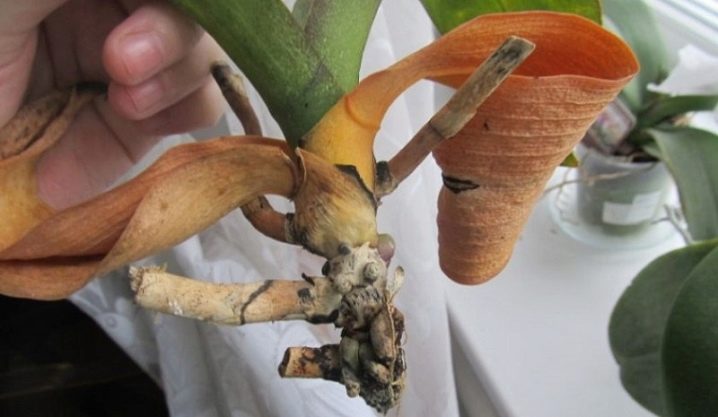
Famous varieties
Orchid Dendrobium phalaenopsis has quite a few varieties, which differ in both shape and color of flowers. The most popular hybrids of the Emma cultivar:
- Emma gold - with yellow flowers and a maroon lip;
- Emma qween - with beautiful lilac petals;
- Emma white - with snow-white flowers;
- Emma green - with green petals and a purple lip.
Also a fairly common cultivar with green petals is Anna Green. Quite an interesting hybrid Snow jade: slightly greenish leaves become white when blooming, and beautiful lilac lines on the lip.
When purchasing Dendrobium Phalaenopsis for yourself, give him a little care and attention, and he will thank you with beautiful flowers and good mood.
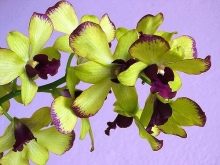
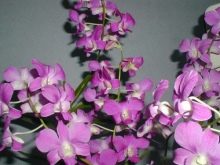
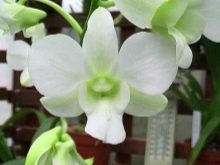
You can find out how to care for the Dendrobium Phalaenopsis orchid in the autumn and winter periods below.


























The comment was sent successfully.